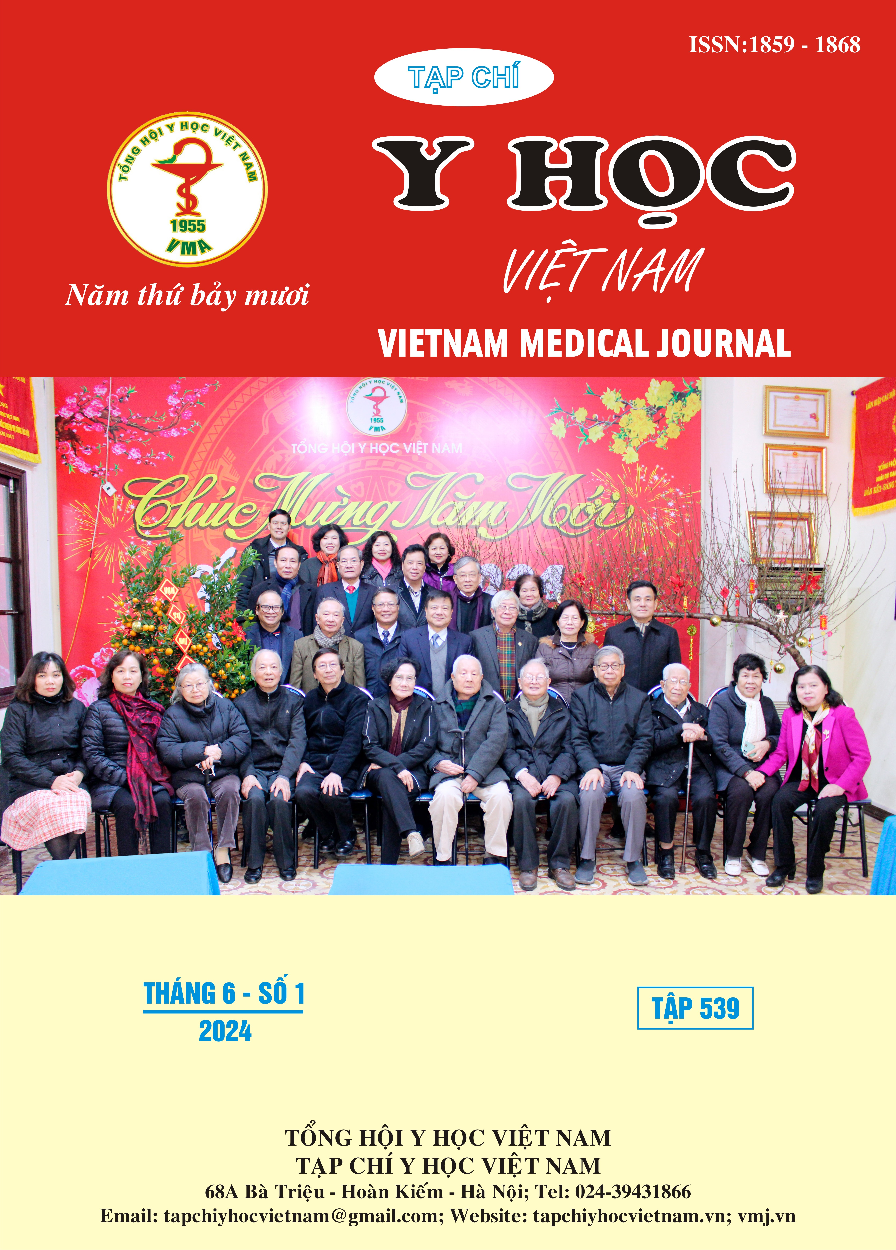RESULTS OF SEIZURE CONTROL IN CHILDREN FROM 2 MONTHS TO 60 MONTHS OLD ACCORDING TO APLS PROTOCOL AT THE EMERGENCY DEPARTMENT AND POISON CONTROL DEPARTMENT OF THE VIETNAM NATIONAL CHILDREN'S HOSPITAL
Main Article Content
Abstract
Objective: To evaluate the results of treating seizures in children according to the advanced pediatric life support protocol (APLS: Advanced Pediatric Life Support). Research subjects and methods: cross-sectional study on 61 patients (from 2 to 60 months) who had seizures and were treated at the Department of Emergency and Poison Control - National Children's Hospital. Results: most patients had seizures relieved in step 1 (accounting for 75.5%). Among rescue medications, intravenous midazolam was the most used, accounting for 77%, followed by sodium valproate (19.7%), intramuscular midazolam (14.8%), diazepam rectal (13,1%) and maintenance midazolam (9.8%). The successful rates of relieving seizures of intravenous midazolam, intramuscular midazolam, and rectal diazepam were 71.7%, 88.9%, and 75%, respectively, and the difference between the drugs was not statistically significant (p>0.05). The average withdrawal time of intravenous midazolam was the shortest at 1.0 ± 0.5 (minutes). That of intramuscular midazolam was 2.0 ± 0.7 (minutes) and diazepam was 2.5 ± 0.5 (minutes). Conclusion: most patients have seizures cured in step 1 and midazolam is the most used drug. Midazolam is an effective seizure reliever in children, and intramuscular midazolam is the preferred choice when patients do not have intravenous access.
Article Details
Keywords
seizure termination, children, APLS.
References
2. Ayesha Abbasi, Ghazala Kazi, Saman Siddiqui, et al (2020). Clinical profile & management of children with seizures presenting to pediatric emergency department: A cross-sectional study. International Journal of Surgery Open, 27, 188-191.
3. Bùi Thu Phương, Phạm Thị Thuận (2022). Đặc điểm dịch tễ học, lâm sàng và nguyên nhân co giật do sốt ở trẻ em tại bệnh viện trung ương quân đội 108. Tạp chí Nhi khoa, 15 (5), tr 96-101.
4. S. Sartori, M. Nosadini, G. Tessarin, C. Boniver, A.C. Frigo, et al. First-ever convulsive seizures in children presenting to the emergency department: risk factors for seizure recurrence and diagnosis of epilepsy. Dev Med Child Neurol, 61 (1) (2019), pp. 82-90.
5. Argent A., Arrowsmith P., Charters A., et al (2016). The convulsing child. Advanced Paediatric Life Support, 6th Edition,, pp. 99-107.
6. Welch, R. D., Nicholas, et al. (2015). Intramuscular midazolam versus intravenous lorazepam for the prehospital treatment of status epilepticus in the pediatric population. Epilepsia, 56: 254-262..
7. Nguyễn Anh Tuấn, Trương Thị Mai Hồng, Lê Thanh Hải (2017). Đánh giá kết qủa điều trị cấp cứu cắt cơn co giật ở trẻ em theo phác đồ APLS. Y học thực hành 1031 (1), 68-70.
8. Nicholas S Abend, Jimmy W Huh, Mark A Helfaer, et al (2008). Anticonvulsant medications in the pediatric emergency room and intensive care unit. Pediatr Emerg Care. 24(10):705-18.
9. Ali Akbar Momen, Reza Azizi Malamiri, Ali Nikkhah, et al (2015). Efficacy and safety of intramuscular midazolam versus rectal diazepam in controlling status epilepticus in children. Eur J Paediatr Neurol; 19(2):149-54.


